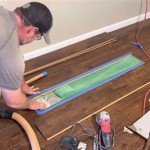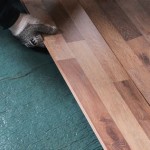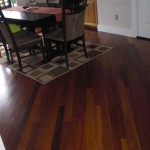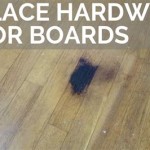How to Remove Paint from Wood Floors: A Comprehensive Guide
Removing paint from wood floors can be a daunting task, but with the right techniques and tools, you can restore your floor's natural beauty without damaging the wood. This guide will provide you with a step-by-step process for safely and effectively removing paint from wood floors, ensuring a professional-looking finish.
Preparation: Gathering Materials and Safety Measures
Before you begin, gather the necessary materials, including a paint stripper, a putty knife or scraper, a vacuum cleaner, rags or cloths, and a floor cleaner. Ensure proper ventilation by opening windows and doors, and wear gloves, eye protection, and a mask to protect yourself from fumes and debris.
Step 1: Apply the Paint Stripper
Apply the paint stripper to a small, inconspicuous area of the floor to test its effectiveness and potential damage to the wood. If the stripper causes any discoloration or damage, discontinue its use and try a different product. Once the stripper has been tested and deemed safe, apply it liberally to the painted area using a paintbrush or roller.
Step 2: Let the Stripper Work
Allow the paint stripper to sit for the time specified on the product label. The stripper's chemical action will break down the paint, making it easier to remove. Avoid leaving the stripper on for too long, as it can damage the wood.
Step 3: Remove the Paint
Once the paint has softened, use a putty knife or scraper to gently scrape it off the floor. Hold the blade at a low angle to avoid gouging the wood. Use a vacuum cleaner to remove the loosened paint as you go.
Step 4: Clean the Floor
After removing the paint, clean the floor thoroughly with a floor cleaner to remove any remaining stripper residue or paint particles. Use a damp cloth or mop to wipe down the floor, and allow it to dry completely.
Step 5: Neutralize the Stripper (Optional)
For certain types of paint strippers, it may be necessary to neutralize the stripper's chemicals to prevent future damage to the wood. Refer to the stripper's product label for instructions on how to neutralize it properly.
Step 6: Sanding (Optional)
If the wood floor has been damaged during the paint removal process, sanding may be necessary to smooth out any rough areas or unevenness. Use a fine-grit sandpaper (120-grit or higher) and sand gently in the direction of the wood grain.
Step 7: Refinishing (Optional)
Once the floor has been sanded, you can refinish it to restore its original beauty. Apply a stain or paint to match the desired color, and finish with a protective polyurethane coating. Allow the finish to dry completely before walking on the floor.
Conclusion
Removing paint from wood floors requires patience, precision, and the right materials. By following the steps outlined in this guide, you can effectively remove paint from your wood floors without damaging them. Remember to test the stripper on an inconspicuous area, wear proper protective gear, and clean the floor thoroughly after stripping. With care and attention, you can restore your wood floors to their former glory.

Easily Remove Paint From Your Floors

How To Get Old Paint Off Hardwood Floors Safe And Effective Renovationproject Cleaning Homereno Housework

How To Remove Paint Off Hardwood Floors Safely

4 Ways To Remove Paint From Wood Wikihow

Don S Room Progress How To Remove Paint From Wood Floors At Home With Ashley

5 Ways To Remove Acrylic Paint From Wood Wikihow

Life On Elizabeth How To Remove Paint Splatter From Wood Floors

How To Remove Paint From Hard Wood Floors

Easiest Ways To Clean Paint Stains From Your Hardwood Floors
How To Get Paint Off Hardwood Floors Howstuffworks
See Also







